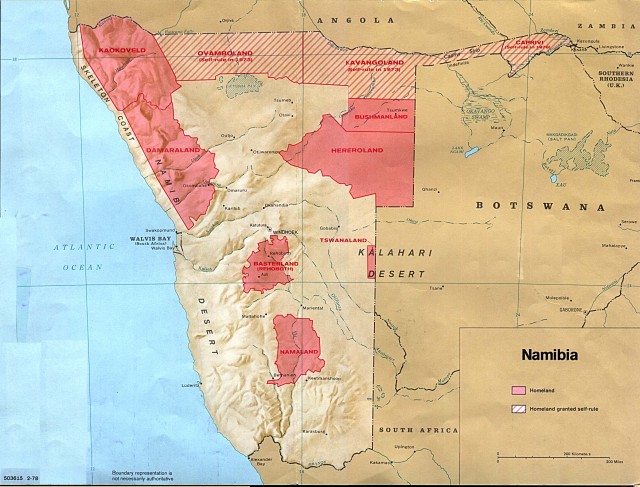Skeleton Coast
THE SKELETON COAST is part of Africa's southwestern coastline. It runs from NAMIBIA's Cape Cross north to the Kunene River. Much of the plant, insect, and animal life here has adapted to a continued shortage of fresh water because most of the coast is part of the Namib Desert. Many species have unique ways to harvest water from morning fogs, helping them to survive this harsh and dry environment.
The frequent thick fogs, strong currents, and everchanging coastline have helped to give this stretch of dangerous coast its name. Many sailors have shipwrecked on the Skeleton Coast. The salty air makes quick work of the thin wood and metal around the hulls of the ships, usually leaving a wooden or metal skeleton that takes years to rust or rot away. Further inland, the skeletons of unlucky sailors who were probably searching for water are often uncovered in the sands by wind. The land is harsh and fresh water is scarce and hard to find, especially if the territory is unfamiliar.

Part of the Skeleton Coast has been designated the Skeleton Coast Park, a wildlife refuge. Animals are safe from hunting inside the park, but some conservationists say the park is too small, requiring animals to migrate out of its protection in search of food and water. Because most of the Skeleton Coast is part of the 1,250-mi- (2,000-km-) long Namib Desert, the coast receives less than .75 in (2 cm) of rain annually, and the only perennial river in the area is the Kunene. Deep gorges and valleys give hints of other rivers that flow during the infrequent rains.
Some rivers will reach the sea at times, but more often run dry before they can traverse the desert. Sand dunes run inland from the coast, and coastal winds sculpt them into long ridges and crescent shapes known as barchans. They can rise to more than 1,300 ft (400 m) and can creep across the desert floor at up to 50 ft (15 m) a year. A strange characteristic is the groaning and rumbling noises these dunes make as sand cascades down their steep slopes.
Despite the harsh conditions, life thrives along the Skeleton Coast. Cape fur seals have established colonies on the beaches and countless birds fish the rich coastal waters. Elephants, giraffes, zebras, chacma baboons, hyenas, and antelope also call the Skeleton Coast home, using the dried riverbeds as game trails and to hunt for food. Water along the riverbeds usually lies underground, within the reach of plant roots, giving inhabitants nutrition and cover. Animals will also often migrate to the few permanent freshwater holes.
Despite the tropical latitude, offshore waters are chilly, usually below 60 degrees F (15 degrees C). The cool, Antarctic BENGUELA CURRENT helps to bring down the temperature of the coastal waters and condense the humid air that blows in from other parts of the ATLANTIC OCEAN. This causes a thick morning fog that engulfs the coast and can travel deep inland. Darkling beetles strategically position themselves on sand dunes, propping their bodies up and dropping their heads down, to drink the condensing water that collects along their shells. Snakes and lizards lick the drops from their own scales while ants drink the water that has collected on and around plants. All have adapted to take advantage of this precious source of moisture.
While the Skeleton Coast might have some ingenious wildlife that has successfully adapted to its treachery, few men have yet conquered its dunes. European explorers arrived in the 15th century, but hurriedly departed. More recently, prospectors and mining companies have, after finding little success, abandoned searches for diamonds in the area. Their deserted facilities, the shipwrecks along the coast, and the skeletons of men and animals throughout, help to give this barren, unforgiving place its name.